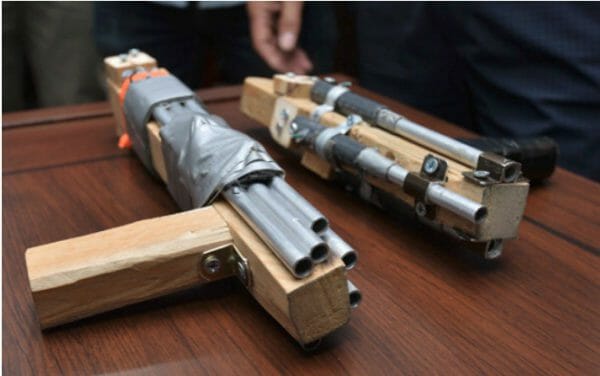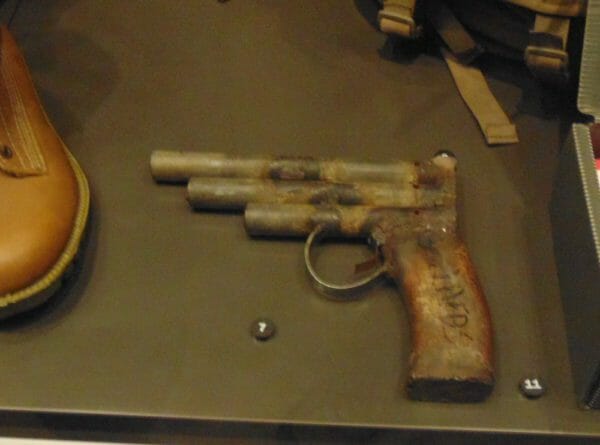
U.S.A. –-(AmmoLand.com)-– On 19 October 2016, a 46-year-old suspect with the surname of Seong started attacking people. He had various weapons, including homemade guns, a bomb, a hammer, and knives. He was wearing an electronic tracking device on his ankle. From Korea JoongAng Daily:
An ex-convict went on a shooting spree in northern Seoul’s Gangbuk District Wednesday night using a gun he manufactured himself, fatally shooting a police officer before he was apprehended.
The ex-convict was wearing a type of bullet-proof vest and helmet and had with him 16 more homemade guns, a bomb and seven knives.
The suspect, a 46-year-old surnamed Seong, was wearing an electronic tracking device on his ankle when he started attacking people near Opaesan Tunnel in Beon-dong. He had a record of prison sentences for sexual assaults.
Seong allegedly shot a passerby with a homemade gun and missed him, although another passerby was hit. Seong then bludgeoned the first passerby with a hammer.
While this event occurred six years ago, it is worth recording as another murder with a homemade gun. It is possible the assassin of former Prime Minister Abe knew of this murder.
Another report says the suspect had six guns. The killer is reported to have made a bomb as well. He was wearing a “bulletproof” vest used in paintball games. The vest was said to be effective in stopping three police bullets. He was also wearing a helmet, origin not stated.
The article from Korea does not show how the propellant for the homemade guns was ignited. The article explains the mechanism as a simple matchlock, or perhaps a sophisticated hand canon, that was ignited by a similar method.
Modern materials make such firearms easy to produce at home. They are the simplest type of firearm, except they are multi-barreled. The earliest hand cannon were single shots. An easy upgrade is to use electrical ignition, such as was used in the homemade double-barreled pistol used to assassinate former prime minister Abe in Japan in July of this year.
One of the 17 homemade guns confiscated from the suspect in this case appears to have six or seven barrels. The pistol in the top right appears to have three barrels. If the average number of barrels per gun was four, the suspect would have had nearly 70 shots readily available. No 3D printer or programmable milling machine was necessary. All the work appears to have been done while wearing an electronic tracking device on his ankle.
The pistols are similar in design to the “cigarette guns” observed in an Australian Infantry museum a few years ago. Those guns were also multibarreled. They were captured in East Timor.

This three-barreled “cigarette” gun has a more refined grip and was produced using a welder. Note the three touchholes near the breach. The trigger appears to be for show only. The propellant was said to be ground matchheads.
Similar guns were and may still be made in the Philippines and are known as “cigarette” guns or paltiks.
Assuming the lumber used in the Korean pistols is close to the American standard of 1 1/2 inches on a side, the bore of the homemade Korean guns appears to be about nine or ten millimeters.
One shot from such a gun is said to have penetrated the Korean police officer’s shoulder from the side and damaged both lungs, killing him.
Matchlocks may be primitive, but they are deadly. The Spanish Conquistadores conquered empires with them.
About Dean Weingarten:
Dean Weingarten has been a peace officer, a military officer, was on the University of Wisconsin Pistol Team for four years, and was first certified to teach firearms safety in 1973. He taught the Arizona concealed carry course for fifteen years until the goal of Constitutional Carry was attained. He has degrees in meteorology and mining engineering, and retired from the Department of Defense after a 30 year career in Army Research, Development, Testing, and Evaluation.

from https://ift.tt/tDb5BAn
via IFTTT

No comments:
Post a Comment